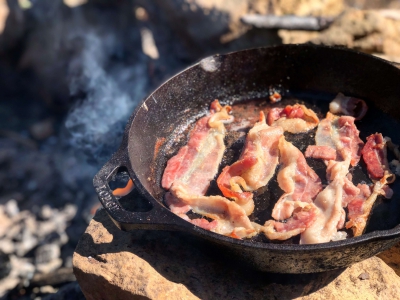How ideas foundry Ecovative transforms mushrooms into everyday materials (including bacon).
There are few things that Eben Bayer hasn’t tried to make out of mushrooms. Over the past decade, the CEO of incubator Ecovative, which develops commercial applications for mushroom materials, has made packaging, textiles, insulation, and furniture out of fungus. This fall, through spinout Atlast Food, Bayer is launching an even more ambitious product: mushroom bacon—the first, he hopes, of a whole new category of mushroom meat alternatives.
Bayer sees mushrooms as an untapped resource for a number of industries. Researchers can easily extract cells of a specimen and grow them in bulk quickly, affordably, and in specific shapes. Ecovative’s early work focused on using mushroom cells in composite materials, growing mycelium with wood chips or hemp stock to create replacements for Styrofoam and building insulation. This material has been produced for Dell, Steelcase, and others to be used in packaging. The company has also developed a vegan mushroom leather licensed by Bolt Threads and used in a partnership with Stella McCartney.
Atlast is founded on the idea that mushrooms, particularly varietals such as chicken of the woods and oyster mushrooms, have a similar cellular structure to meat and can be cultivated to mimic bacon, steaks, chicken breasts, and other whole cuts (as opposed to Impossible Foods’ and Beyond Meat’s ground meat options). “Mycelium forms these beautiful, micron-level structures, with extreme precision, in 3D,” Bayer says. “So I think about, Where do you need really complex structures?” Atlast is planning to launch its own mushroom bacon brand this fall, before supplying other companies with the ingredient.
Source: Fast Company
For the complete article and author credits click here






















